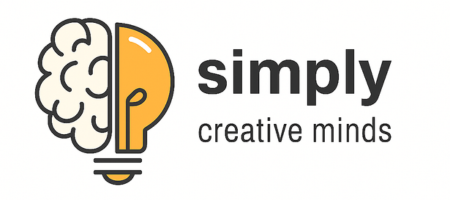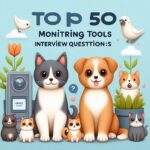
1. What is cloud monitoring?
Answer:
Cloud monitoring is the process of overseeing the performance, availability, and health of cloud infrastructure, services, and applications.
2. Why is cloud monitoring important?
Answer:
It helps ensure uptime, optimize resource usage, detect security breaches, and maintain service level agreements (SLAs).
3. What are the key metrics monitored in cloud environments?
Answer:
CPU usage, memory usage, network throughput, disk I/O, latency, error rates, and uptime.
4. What is the difference between cloud monitoring and traditional monitoring?
Answer:
Cloud monitoring deals with dynamic, scalable, and distributed cloud resources, whereas traditional monitoring focuses on fixed, on-premises infrastructure.
5. What tools are commonly used for cloud monitoring?
Answer:
AWS CloudWatch, Azure Monitor, Google Cloud Operations (formerly Stackdriver), Datadog, New Relic, Prometheus.
6. What is AWS CloudWatch?
Answer:
A monitoring and management service for AWS resources and applications running on AWS.
7. What types of data does AWS CloudWatch collect?
Answer:
Metrics, logs, events, and alarms from AWS resources and applications.
8. What is Azure Monitor?
Answer:
Azure Monitor is a full-stack monitoring service for collecting, analyzing, and acting on telemetry from Azure cloud and on-premises environments.
9. What is Google Cloud Operations Suite?
Answer:
A set of integrated tools for monitoring, logging, and diagnostics on Google Cloud Platform.
10. What is a cloud monitoring agent?
Answer:
A software component installed on cloud resources to collect and send telemetry data to monitoring services.
11. What is the difference between metrics and logs in cloud monitoring?
Answer:
Metrics are numerical values tracked over time; logs are detailed records of events or transactions.
12. How do you monitor serverless applications?
Answer:
By tracking function invocation counts, durations, errors, and cold starts using platform-specific tools like AWS CloudWatch or Azure Monitor.
13. What is autoscaling, and how does monitoring support it?
Answer:
Autoscaling automatically adjusts resource capacity based on demand; monitoring provides the metrics (CPU, memory, etc.) that trigger scaling actions.
14. What are cloud service level agreements (SLAs)?
Answer:
Contracts defining expected uptime and performance guarantees from cloud providers.
15. How do you monitor multi-cloud environments?
Answer:
By using unified monitoring platforms like Datadog or New Relic that integrate data from multiple cloud providers.
16. What are the challenges of cloud monitoring?
Answer:
Dynamic infrastructure, multi-tenancy, data volume, cost management, and security concerns.
17. What is synthetic monitoring in cloud environments?
Answer:
Simulating user interactions with cloud services to proactively check availability and performance.
18. How can you monitor cloud security?
Answer:
By tracking access logs, user activity, network traffic, and using security information and event management (SIEM) tools.
19. What is the difference between agent-based and agentless cloud monitoring?
Answer:
Agent-based requires installing software on resources; agentless uses APIs and network protocols to collect data remotely.
20. What is cloud cost monitoring?
Answer:
Tracking and analyzing cloud resource usage to optimize spending.
21. What are tags and labels in cloud monitoring?
Answer:
Metadata assigned to cloud resources for organization, filtering, and aggregation of monitoring data.
22. How do you monitor containers in the cloud?
Answer:
By collecting metrics and logs from container orchestration platforms like Kubernetes using tools like Prometheus and Grafana.
23. What is distributed tracing in cloud monitoring?
Answer:
Tracking the path of requests across microservices to diagnose latency and errors.
24. What is an alert threshold?
Answer:
A predefined value that triggers an alert when crossed by a monitored metric.
25. How do you reduce alert fatigue in cloud monitoring?
Answer:
By fine-tuning thresholds, using anomaly detection, and grouping related alerts.
26. What is cloud observability?
Answer:
A comprehensive approach to monitoring that includes metrics, logs, and traces for full visibility into cloud systems.
27. How do you monitor cloud database services?
Answer:
By tracking query performance, latency, connections, and resource utilization with platform-specific or third-party tools.
28. What is the role of APIs in cloud monitoring?
Answer:
APIs enable data collection, integration, and automation between monitoring tools and cloud services.
29. What is the difference between real user monitoring (RUM) and synthetic monitoring?
Answer:
RUM collects data from actual users; synthetic monitoring uses scripted tests to simulate user behavior.
30. How do you monitor cloud network performance?
Answer:
By measuring latency, packet loss, throughput, and connectivity using tools like VPC Flow Logs and network monitoring services.
31. What is a health check in cloud environments?
Answer:
A probe that verifies the availability and responsiveness of a service or resource.
32. How does cloud monitoring support incident management?
Answer:
By providing real-time alerts and data to diagnose and resolve incidents quickly.
33. What are some common cloud monitoring best practices?
Answer:
Automate monitoring, set clear SLAs, use tagging, monitor costs, and regularly review alert rules.
34. How do you handle monitoring data storage and retention?
Answer:
By defining retention policies based on compliance and cost considerations, and using scalable storage solutions.
35. What is anomaly detection in cloud monitoring?
Answer:
Using machine learning or statistical methods to identify unusual patterns or deviations.
36. How do you monitor cloud-based APIs?
Answer:
By tracking request rates, error rates, latency, and throughput using API management and monitoring tools.
37. What is a monitoring dashboard?
Answer:
A visual interface that displays key metrics and alerts for quick insight into system health.
38. What is cloud monitoring automation?
Answer:
Using scripts and tools to automatically configure, update, and respond to monitoring data.
39. How do you monitor compliance in cloud environments?
Answer:
By tracking configurations, access controls, and audit logs against compliance frameworks.
40. What is the role of machine learning in cloud monitoring?
Answer:
It helps in anomaly detection, predictive analytics, and reducing false alerts.
41. How do you monitor hybrid cloud environments?
Answer:
By integrating monitoring tools across on-premises and cloud infrastructures.
42. What are service-level indicators (SLIs) and service-level objectives (SLOs)?
Answer:
SLIs are measurable values that indicate service performance; SLOs are targets set for those indicators.
43. How do you monitor cloud storage services?
Answer:
By tracking usage, latency, errors, and throughput using provider-specific metrics.
44. What is role-based access control (RBAC) in cloud monitoring?
Answer:
A security practice that restricts access to monitoring data and configurations based on user roles.
45. What is the significance of log aggregation in cloud monitoring?
Answer:
Centralizing logs from multiple sources simplifies analysis and troubleshooting.
46. How does container orchestration impact cloud monitoring?
Answer:
It adds complexity, requiring monitoring at both container and orchestration platform levels.
47. What is the difference between monitoring and observability?
Answer:
Monitoring tracks known metrics and events; observability provides the data needed to understand unknown issues.
48. How do cloud-native applications affect monitoring strategies?
Answer:
They require dynamic, scalable monitoring that can handle microservices, containers, and serverless architectures.
49. What is the importance of alert correlation in cloud monitoring?
Answer:
Combining related alerts to reduce noise and improve incident response efficiency.
50. What is the impact of cloud monitoring on DevOps practices?
Answer:
It enables faster feedback loops, continuous delivery, and improved collaboration between development and operations teams.

